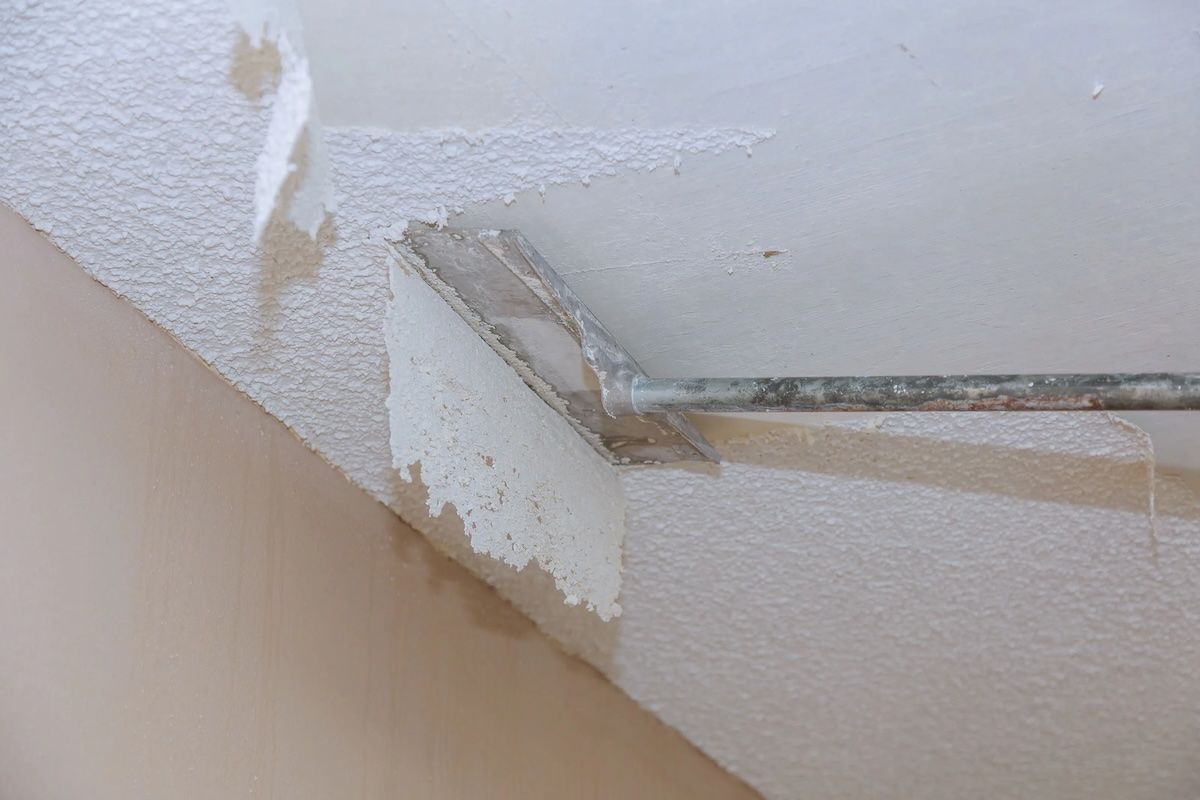Can You Start Looking at Houses Without Pre Approval?
A mortgage pre-approval is a lender’s promise to loan you a certain amount, provided nothing changes dramatically before you apply for the actual mortgage. It indicates how much house you can afford after reviewing your finances and credit history.
While it’s true you can start looking at properties without a pre-approval, getting one is a smart first step for most home buyers. The process of getting one only takes a few weeks and involves submitting basic documents like pay stubs, bank statements, and your driver’s license. In return, you’ll get a letter stating the loan amount you’re approved for.
With your pre-approval letter, you can shop for homes with confidence, and sellers will take your offers more seriously, knowing your ability to get a loan isn’t an “if” but a “when.” In fact, many sellers won’t consider an offer that isn’t accompanied by a pre-approval letter. Furthermore, you also avoid wasting time viewing properties outside your price range.
Best of all, the process only takes a couple of hours – a small price to pay for bolstering your offer. With a pre-approval in hand, you can search stress-free and make offers, knowing you’re ready to go.
Can you start looking for offers without a pre-approval? Yes. But not having one hinders the offer process. Isn’t it worth a few hours now for that peace of mind? Pre-approval lifts that uncertainty so you can focus fully on finding your dream home.
Do You Need Pre-Approval Before Buying a House?
Technically, you don’t need a pre-approval to make an offer on a house. However, it is strongly advised that all buyers get pre-approved before they even start looking at properties.
Most sellers will require either a pre-approval letter or proof of funds to purchase with all cash before accepting an offer.
Confidence in Lendability
While some buyers with strong financial positions feel confident in their ability to secure financing, there are benefits to obtaining pre-approval anyway. Individuals with excellent credit scores, high and stable incomes, and sizable down payments may believe they are virtually guaranteed loan approval. However, lending decisions can sometimes vary between individual underwriters.
Rather than relying solely on one’s financial attributes, pre-approval provides official confirmation after a lender’s review that a buyer is deemed qualified to borrow a certain amount. This saves potential surprises down the road.
For example, a change in employment or new debt obligations prior to closing could influence underwriting differently than anticipated. Pre-approval takes the subjectivity out of the process, giving buyers solid assurance upfront.
Just as importantly, it puts sellers at ease. Offers subject to financing leave terms dependent on a buyer later obtaining a loan through what is known as a finance contingency. Without a pre-approval in place, sellers cannot be confident that the buyer will receive loan approval when the time comes.
However, a pre-approval letter reassures sellers by providing proof of the buyer’s pre-qualified status after a lender’s review of their financial details. This makes offers containing financial contingencies more attractive and reliable options for sellers.
Cash Buyers
Those with all cash offers have greater flexibility since financing is not needed. However, sellers still prefer to see proof of funds to confirm the buyer’s financial situation to complete the purchase without loans. A bank statement or letter from a financial institution showing sufficient balances is usually requested. Cash buyers benefit from pre-qualifying, too, as it proves to sellers they are serious and ready to transact.
In a competitive market, getting pre-approved is almost a necessity to make a strong offer. It demonstrates to sellers that financing won’t fall through, giving buyers a decisive edge over other interested parties. The time spent getting pre-qualified pays off in the confidence and competitiveness it provides throughout the home-buying process.
What is a Pre-Approval Letter?
A pre-approval letter is a document from a mortgage lender stating that a prospective homebuyer qualifies for a specific loan amount based on a review of their financial history and income.
The pre-approval process involves submitting documents to verify income, assets, debts, and other financial information. The lender analyzes these details to determine the maximum mortgage amount the borrower qualifies for and then issues the pre-approval letter. While a pre-approval letter doesn’t guarantee the potential borrower a mortgage, it does instill confidence in their ability to get financing.
Preapproval letters indicate the maximum purchase price, estimated interest rate, fees, and other loan terms the lender is willing to potentially offer that borrower.
Benefits of Getting Pre-Approved
Getting pre-approved for a mortgage loan is an important first step for many homebuyers. While it may seem like extra work upfront and a delay in your property search, undergoing the pre-approval process provides several key advantages that make the home-buying journey much smoother.
Here are a few of the top benefits buyers commonly experience.
Clarity on Budget and Affordability
One of the most valuable aspects of getting a pre-approval is understanding your exact price range before house hunting. The pre-approval process gives buyers a hard number from the lender on what they qualify for so they can focus their search on properties within their budget.
Real Estate Agents Love Working with Pre-Approved Buyers
A mortgage preapproval letter provides a clear picture of a potential buyer’s budget that any savvy real estate agent will appreciate. Working with pre-approved clients allows agents to be laser-focused on the task at hand – finding their clients the perfect home within their verified price range.
In fact, if an agent starts working with a buyer who hasn’t yet started working with a mortgage broker, a broker is often their first referral. Real estate agents want to make sure their buyers are qualified before allocating too much time to showing them properties.
With a mortgage preapproval in their pocket, an agent knows exactly what a buyer has been approved for by their lender. This clarity allows the agent to efficiently schedule viewings for properties that are a solid fit. No time is wasted touring homes that don’t align with the buyer’s approved financing terms.
Both buyers and their agents benefit tremendously from this targeted approach. Showings can be more productive when dollars and cents are clearly defined upfront. Agents avoid the aggravation of feeling like they’re dragging buyers around on a wild goose chase.
Competitive Edge in Multiple Offer Situations
With financing pre-approved, sellers have the assurance that an offer is backed by a verified loan. In a hot market with bidding wars, this strengthened position gives offers a leg up over those with uncertain financing terms.
Getting pre-approved gives buyers the ability to act quickly once they find the right home.
Flexibility in Negotiations
Even when competing against cash offers, having financing pre-vetted allows buyers to negotiate confidently, knowing they are qualified. This empowers homebuyers in discussions around price and other contract terms. Buyers who haven’t gone through the pre-approval process could end up in a situation where they are negotiating blindly or getting into a contract they can’t fulfill.
Fast Track to Closing
One of the most significant advantages of obtaining a pre-approval is the expedited closing it allows. While the homebuying process has many exciting stages, the final push to close can also be a stressful one, with paperwork, inspections, and negotiations all needing to fall into place by the closing date.
A pre-approval helps alleviate much of this anxiety by getting a head start on the loan process. Key documentation like pay stubs, bank statements, and tax returns have already been verified by the lender in the pre-approval phase.
This means that once an offer is accepted, the heavy lifting is already done, and you just need to submit updated documentation. Rather than scrambling to submit piles of financial info within a tight deadline, buyers can simply focus on the remaining closing tasks, like the home inspection.
By streamlining the approval steps, pre-approval sets buyers up to close on schedule, avoiding costly delays that could put the deal at risk.
There is little downside to getting pre-approved. It provides invaluable guidance for homebuyers and makes the entire experience more organized and efficient. Both buyers and sellers benefit from the added confidence and transparency a pre-approval provides. Plus, it’s free. If you don’t end up using the lender or pre-approval letter, there’s no cost to the buyer.
Pre-approval vs. Pre-qualification
When starting the home buying process, you’ll likely hear the terms “pre-qualified” and “pre-approved” used often in your mortgage application. Though they sound similar, these two statuses represent very different levels of mortgage readiness.
The key difference between pre-approval and pre-qualification is the depth of the evaluation process.
Pre-Qualification
Being pre-qualified means a lender has made a preliminary assessment of what you can afford based on the limited information you’ve provided. They will ask about your income, debts, and assets to analyze your potential purchasing power. However, the lender does not pull your credit report or verify details at this point.
While pre-qualification can help gauge the price range, it is not a guarantee of loan approval. The analysis is primarily based on your own claims, not a comprehensive review.
Pre-Approval
Pre-approval involves a much more rigorous review from the lender. They will pull your credit reports, confirm employment details, and verify assets.
After underwriting your financial profile, the lender issues a letter confirming you are approved to borrow up to a certain amount. This pre-approval letter can be shown to sellers as proof of your financing capability.
Pre-approval provides a major advantage in competitive markets. Sellers will know your offer is backed by a serious lender review. This establishes credibility and puts you ahead of buyers who are still at the pre-qualification stage.
Understanding the differences between these two processes is key to developing a strong offer. Buyers should secure a pre-approval whenever possible to demonstrate their financial readiness.
How to Get Pre-approved for a Mortgage
Have you ever wondered how much house you can afford before starting your home search? Or how do you know if you’ll qualify for a loan at all? Applying for mortgage pre-approval is a helpful first step that can answer those questions.
The pre-approval process gives homebuyers a clear idea of what price range works for their budget and what loan programs they’re eligible for. Here are the five steps that outline the basic process most lenders follow for obtaining pre-approval.
Step 1: Check Your Credit Score
Check your credit score before applying for pre-approval. This will give you an idea of where you stand with lenders. Most lenders require a minimum score of 620 to qualify but aim higher if possible.
A credit score of 740 or above will provide the best interest rates and the highest chances of approval. Reviewing your reports will allow you to check for any errors or negative items that may be dragging your score down as well. Address these issues before applying to strengthen your loan application.
Step 2: Review Your Credit Report
In addition to checking your score, it’s a good idea to request a full copy of your credit report from each bureau. Carefully examine each item for any inaccuracies or outdated negative marks, like late payments. If you find any errors, dispute them immediately with the credit bureau.
Also, determine if there are any delinquent accounts that can be resolved before applying. Settling past-due debts will help boost your score and help you appear as a lower risk to lenders.
Step 3: Calculate Your Debt-to-Income Ratio
Use an online DTI calculator to estimate your debt-to-income ratio based on your current monthly debt obligations, like credit cards, auto loans or student debt, as well as your gross monthly income.
Lenders generally want to see a DTI of 36% or lower. If your current DTI is too high, focus on paying down debts or refinancing high-interest loans to get it within an acceptable range and increase your chances of approval.
Step 4: Gather Required Documentation and Submit to Mortgage Broker
Once you are confident in your financial position and ability to get pre-approved, it’s time to approach lenders and mortgage brokers. A lender is a bank or credit union, whereas a mortgage broker can shop around to several loan providers on your behalf.
Collect documentation such as recent pay stubs, W-2s, signed tax returns, bank statements, and personal information like your Social Security number, date of birth, and current address. Being prepared with these documents makes the application process smoother.
Once the lender or broker has had time to review your documents, they may ask for additional supporting documentation. To expedite the process, find and supply the necessary paperwork as quickly as possible.
Step 5: Get Quotes from Multiple Lenders
Contact at least three to five lenders to compare rates and programs. A single credit inquiry will result from applications within a 30-day period, so act quickly, and it won’t heavily impact your credit score. Competing offers allow you to negotiate for the best available terms.
Tips for Improving Your Pre-approval Chances
Securing a home loan is an important step towards achieving the dream of homeownership. However, with high demand in today’s market, lenders need to carefully evaluate each applicant’s ability and likelihood to repay the debt successfully.
The good news is that there are strategic steps prospective buyers can take to strengthen their application and stand out among competing offers.
- Check your credit report – Carefully reviewing your credit report is important for understanding how lenders will view you as a borrower. Be on the lookout for any inaccuracies or outdated items that could negatively impact your credit score. You can always contact creditors to get items on your credit report fixed.
- Fix any mistakes on your credit report – It’s a good idea to dispute any errors you find to ensure your credit report accurately reflects your credit history and financial obligations. Taking the time to remedy issues demonstrates diligence.
- Improve your credit score – Taking steps to consistently make on-time payments and pay down credit cards or other debt balances can help boost your credit score over time. A higher score qualifies you for better mortgage rates and terms.
- Lower your debt-to-income ratio – Lenders prefer to see debt payments comprising less than 36% of gross monthly income (including your new mortgage payments). Paying down existing obligations can lower this ratio and make you a more attractive borrower.
- Make a sizable down payment – Putting 20% or more down removes the need for private mortgage insurance and reduces risk for the lender. It also lowers your monthly payments, further strengthening your loan application.
Proactively addressing these types of items puts your best foot forward with lenders and separates you from other applicants. But if you’re not sure where to begin optimizing your finances and application for the best possible outcome, then start by connecting with top-rated lending professionals at FastExpert.
Browse verified real estate agent and lender profiles to find one with a proven track record of success. Connect with an expert advisor today for a customized plan to enhance your approval potential.
Getting Pre-Approved Puts You Ahead of the Competition
While it’s possible to start looking at housing without a pre-approval and even make an offer, taking this proactive step provides clear advantages. Receiving a pre-approval letter lets sellers know you’re a serious buyer who has already cleared at least the first hurdle with lenders.
It also allows you to move quickly once you find the perfect property. Rather than waiting for a full loan application to be processed, you can submit a strong, confident offer backed by pre-approval. This gives you an edge over buyers in a hot market.
Getting in touch with professionals at FastExpert makes the pre-approval process simple. FastExpert allows you to read reviews and track records to find the right professional to help you with your real estate purchase.
Connect with multiple highly-rated real estate professionals near you today with FastExpert.





